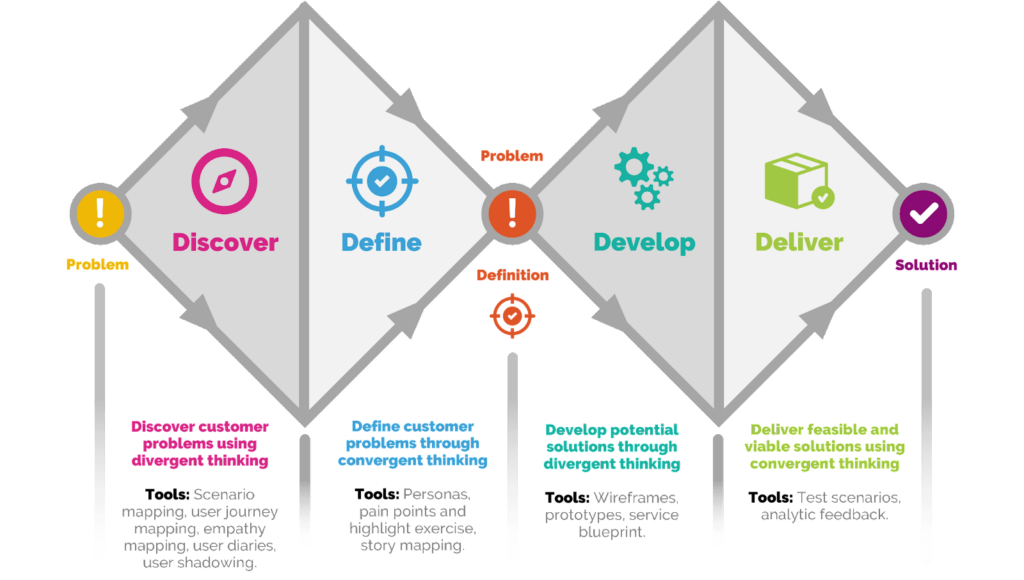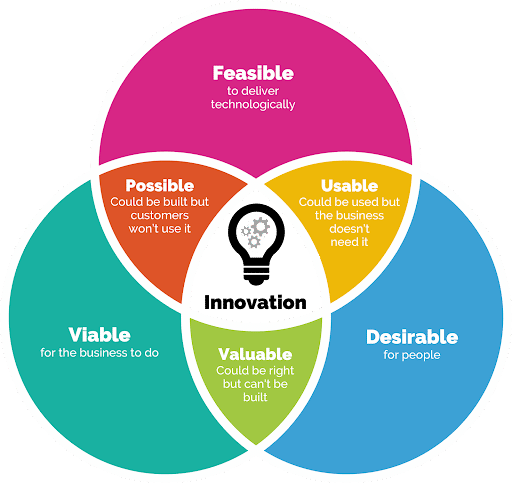The open secret of design thinking is to start with a problem and develop multiple solutions in order to come up with the best solution.
To design the best digital tools to improve your CX – start with the problem
To design the best digital tools to improve your CX – start with the problem
The open secret of design thinking is to start with a problem and develop multiple solutions in order to come up with the best solution.

Meet the author
The open secret of design thinking is to start with a problem and develop multiple solutions in order to come up with the best solution. Starting with a solution in mind reduces the chance of picking the right tool.
Start with the problem
You want to find the best solution to improve your customers’ experience, so where do you start? Instinct can lead us down a path to explore tooling and solutions or go to market leaders for their opinion – and many organisations go down this path. If this behaviour of jumping to the answer and rapid solutionising sounds familiar, you might miss an opportunity to solve the real problem and exceed customer expectations.
Through multiple product, service and digital transformations, we found that the best solution to improve your customers’ experience is the solution that solves under-served and latent customer needs while solving a problem and delivering prioritised outcomes to the business. As such, the best place to start is by empathising and understanding your customers through applying design thinking.
Why is now a critical time to apply design thinking? The technology landscape is rapidly changing and a solution that would have been right last year may no longer be the best. The advances in technology and different solutions open up new means to solve customers’ problems, and companies who don’t keep an open mind about tooling are at risk of being taken over by more dynamic competitors.
More importantly, though, customer demand and behaviours are changing rapidly too. Their needs and expectations are constantly changing so if you want to select the best solutions, you need to stay ahead of your evolving customer needs.
Staying ahead of evolving customer needs
So where to start? If you have a well-defined vision and strategy, which breaks down into Objectives & Key Results (OKRs) you have effectively set out the objective, scope and guardrails of the solution. Before you pick a solution though, you need to ensure you are solving the right problem; best phrased as a ‘How might we’ problem statement and using design thinking.
We have explored design thinking and the core concept of a double diamond in a previous blog. In essence, it separates the problem and solution space into two diamonds which start with exploring options and defining a path forward.

By starting with divergent thinking to discover the problems to solve, and then defining what problem to solve using convergent thinking, you increase the chance of solving the right problem. Then in the ‘Develop’ phase, you explore different solution options using divergent thinking, before ‘Delivering’ the right solution once you explored all alternatives using convergent thinking. This, in turn, increases the chance of you not just solving the right problem, but solving the problem right. Crucially, all alternatives tie back to your customer needs, their experience and how you can enhance it. That way the chances of you selecting the best solution are enhanced.
Throughout the process of going through the double diamond, you will gather evidence that your solution is desirable, but that is not enough. To deliver true innovation and the best solution you also need to ensure that it is viable for the business and that it is technically feasible to deliver. You need to fulfil all three criteria to be successful:

Why is this approach so valuable though? For leaders who are dissatisfied with how transformations are managed, this approach combines customer-centric and outcome-orientated approaches that provide solutions that deliver business value and enhanced customer experience. Unlike solution-oriented approaches, this approach increases the chances of developing the right thing, improving CX and increasing return on investment.
How we begin improving your CX by starting with the problem
Across our public and private sector clients, we have established a discovery framework that enables us to quickly understand desired OKR, the current landscape and solution concepts that inform an approach for delivery. Throughout this approach, we create the voice of the customer, business and employee to explore how we can technologically transform the organisation. We explored this in a recent podcast with some of our CX SMEs. Common outputs include customer journey maps, wireframes and service design blueprints that show how the organisation supports the customer experience end to end and throughout time, as outlined in one of our previous blogs.
How you can improve your CX
Not jumping to a solution, while shifting existing behaviours and mindsets is not easy. In order to start problem- and customer-focused, leaders in the organisation need to have excellent persuasion skills, be forward-thinking and be brave enough to leave detailed solution designs to smart teams.
When leaders focus on the direction, priority and objectives instead of making detailed solution decisions, their teams are more empowered to create the best solution and customer experience improves because they can make better decisions based on the proximity to the customers.
While it may be hard for some leaders to be this brave and create this kind of environment, the impact will be worth it. This mindset can create a competitive advantage that continues to develop superior solutions that improve CX. Beyond that, it can catapult brave leaders to the front of the organisation, solve the most meaningful problems in innovative ways, and improve the profitability of the company that serves a loyal customer base.

